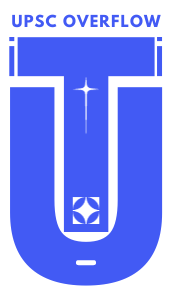Geography of Ivory Coast – The Ultimate Free Guide 2021
- Ivory Coast, also known as Côte d’Ivoire, officially the Republic of Côte d’Ivoire, is a country located on the south coast of West Africa.
- Ivory Coast’s political capital is Yamoussoukro in the center of the country, while its economic capital and largest city is the port city of Abidjan.
- The official language of the republic is French, with local indigenous languages also being widely used that include Baoulé, Dioula, Dan, Anyin, and Cebaara Senufo. In total, there are around 78 different languages spoken in Ivory Coast.
- The country has large populations of the adherents of Christianity, Islam and various indigenous religions.
- Ivory Coast is a republic with strong executive power vested in its president.
Geography of Ivory Coast

Region:
There are 31 Regions in Ivory Coast
- Agnéby-Tiassa
- Bafing
- Bagoué
- Bélier Region
- Béré
- Bounkani
- Cavally
- Folon
- Gbêkê
- Gbôklé
- Gôh
- Gontougo
- Grands-Ponts
- Guémon
- Hambol
- Worodougou
- Haut-Sassandra
- Iffou
- Indénié-Djuablin
- Kabadougou
- La Mé
- Lôh-Djiboua
- Marahoué
- Moronou
- Nawa
- N’Zi
- Poro
- San-Pédro
- Sud-Comoé
- Tchologo
- Tonkpi
Area:
322,463 km2
Capital:
Yamoussoukro
Abidjan
Population:
26,378,274
Bordering Countries:
- Liberia and Guinea to the west,
- Mali and Burkina Faso to the north,
- Ghana to the east, and the Gulf of Guinea and the Atlantic Ocean to the south.
Continent:
Africa
Geographical Coordinates:
7.5400° N, 5.5471° W
Longest River:
Bandama River
General Terrain:
The terrain is mostly flat to undulating plain, with mountains in the northwest.
Geographical Low Point:
Gulf of Guinea (0/M)
Geographical High Point:
Mont Nimba (1,752/M)
Climate:
- The climate of Ivory Coast is generally warm and humid, ranging from equatorial in the southern coasts to tropical in the middle and semiarid in the far north.
- There are three seasons:
- warm and dry (November to March),
- Hot and dry (March to May), and
- Hot and wet (June to October).
Major cities:
- Abidjan
- Bouaké
- Daloa
- Korhogo
- Yamoussoukro
- San-Pédro
- Gagnoa
- Man
- Divo
- Anyama
Major Land forms:
Most of Cote d’Ivoire (north to south) is a forested plateau, one that gradually slopes down to the Atlantic Ocean coastal areas. Exceptions are the edges of the Guinea Highlands (4000 – 5000 ft. peaks) on its western border with Guinea, in the far northwest, and the elevated savanna and forest of the northeast
Major Rivers and Lakes:
Major Rivers:
- Cestos River
- Cavalla River
- Nono River
- San-Pédro River
- Sassandra River
- Davo River
- Lobo River
- Nzo River
- Bafing River
- Boa River
- Férédougouba River
- Tienba River
- Boubo River
- Bandama River
- Nzi River
- Marahoué River
- Kan River
- Bou River
- Solomougou River
- Ira River
- Agnéby River
- Komoé River
- Ba River
- Kongo River
- Iringou River
- Léraba River
- Bia River
- Tano River
- Black Volta
- Niger River
- Bani River
- Bagoé River
- Kankélaba River
- Baoulé River
- Dégou River
- Sankarani River
Major Lakes:
- Lake Buyo
- Lake Kossou
Largest Lake:
Lake Kossou
Natural Resources:
- Côte d’Ivoire has rich deposits of
- Gold,
- Diamonds,
- Iron,
- Manganese,
- Cobalt,
- Bauxite,
- Nickel,
- Natural gas and
- Petroleum.
Major Geographical Features:
Topography:
The southern part of Côte d’Ivoire is characterized by broad plains, dissected by three main rivers, the Sassandra, the Bandama, and the Komoé. These plains and their productive soils were once forested, but are now heavily used for agriculture and plantations. The center of the country is a transition zone between forest and savanna. Most of the savannas are being encroached upon by rainfed agriculture, especially in the north, along the borders with Mali and Burkina Faso. In northwestern Côte d’Ivoire, several highlands rise from the surrounding plateau. This mountainous region is part of the Guinean Highlands that extend from the southern Fouta Djallon through southeastern Guinea, northern Sierra Leone and Liberia, and adjacent areas of Côte d’Ivoire.
Oceans:
The North Atlantic Ocean.
Islands:
- Île Boulay
- Îles Ehotilé National Park
Mountain Ranges:
- Mount Richard-Molard
- Mont Zo
- Mont-Korhogo
- Mont Niénokoué
- Mont Groba
- Mont Tonkoui
Large Detailed Map of Ivory Coast

Ivory Coast location on World Map

See Also:
